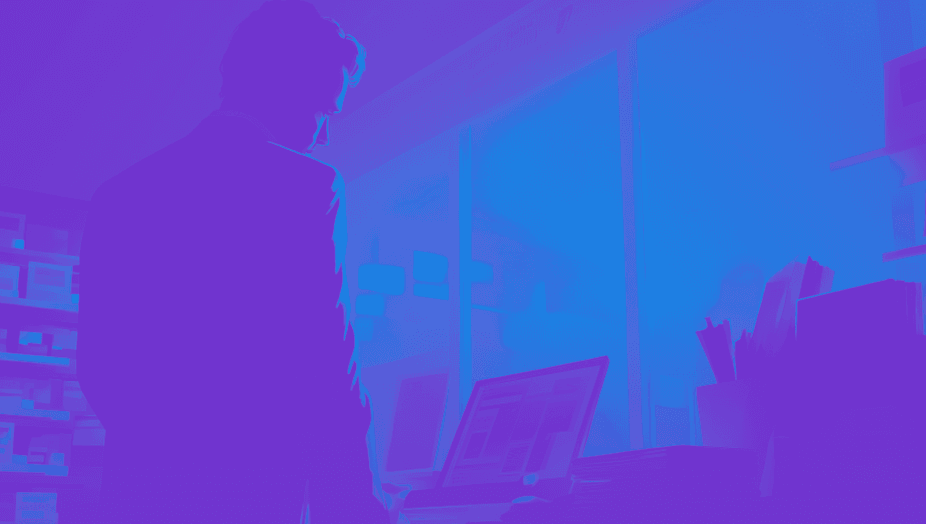
Comparison between Trustly and PayPal is a comparison between two of the industry's leading payment solutions. Each, however, has a different approach to processing payments.
Trustly is an Open Banking leader. PayPal is a widely accepted digital wallet and online payment solution.
In this article, we're going to look closely at PayPal and Trustly for merchants. We will focus on functionality, fees, supported markets, security, integrations, and customer support.
Note: All information accessed October 28th, 2024. All information is current and correct to the best of Noda’s knowledge.
Trustly Company Overview
Trustly was founded in 2008 in Sweden as an Open Banking system. This means it allows direct bank payments (often referred to as pay-by-bank) that bypass card networks.
Trustly is focused on Europe but has begun expanding globally. This makes it suitable for industries like e-commerce, travel, gaming, and more in Europe, particularly the UK and Nordic countries.
PayPal Company Overview
PayPal was founded in 1998 in the United States.
The company offers an extensive digital wallet system that allows transactions via stored payment methods. PayPal allows both personal and business accounts. PayPal users have access to everything from PayPal debit cards that access their account directly to business loans and funding to direct e-commerce payment solutions that simply use a button created on PayPal.
PayPal is global, including the UK, the EU, and beyond. It's accepted in over 200 countries. PayPal's broad acceptance is extremely valuable in regions where Open Banking is less common.
Industries Served
Trustly specialises in working with retail, gaming, travel, and financial services industries. Trustly can sometimes be particular about what businesses they accept; much of their work comes through third-party providers, such as Stripe, Adyen, and even PayPal.
PayPal has an extremely broad range of industries including retail, travel, subscriptions, Software-as-a-Service, charities, cryptocurrency, etc. They offer flexible, business-friendly solutions.
Unique Features
Trustly is an Open Banking system that allows direct bank payments. It is very easy to integrate with any kind of point-of-sale or e-commerce system without the need for cards or mobile apps.
PayPal's digital wallet’s payment methods include credit cards, debit cards, bank accounts, pay-later options, and recurring billing payments.
Trustly’s “pay-by-bank” feature allows for faster, direct transactions and instant payments. This makes Trustly ideal for reducing friction in moving money and lowering fees.
PayPal offers online checkout, Pay in 3 (BNPL), invoicing, and POS systems and payment options for both consumers and businesses.
Because Trustly is an integrated bank system, funds can be moved from one bank to the next instantly.
PayPal offers:
- AliPay
- Apple Pay Web
- Bancontact
- Bancomat Pay
- BLIK
- EPS
- Finnish Online Bank Transfer (Verkkopankki)
- Giropay
- Google Pay
- GrabPay
- iDEAL
- MB Way
- Mercado Pago
- Multibanco
- MyBank
- PayU
- POLi
- Przelewy24 (P24)
- Trustly
- Trustpay
- WeChat Pay
These payment methods are offered on a “case-by-case basis” to consumers. Because these transactions are often not profitable for PayPal, they prefer to review each case.
Many of these payment methods, withdrawals from PayPal to, for example, a merchant’s bank account can sometimes take a day or two.
Trustly's very simple user experience focuses on direct bank transfers with minimal processing time. PayPal offers merchants an intuitive dashboard with all of those multiple payment methods all managed in one place.
Security and Compliance
Trustly uses bank-grade security via Open Banking APIs. It has built-in fraud prevention and strong compliance with EU banking standards, including the EU's stringent anti-money laundering standards.
PayPal is PCI compliant, has two-factor authorisation, 3D security for cards, and buyer and seller protections.
Trustly is licensed across a variety of European markets, including the UK (FCA), the EU, Sweden (Swedish Financial Supervisory Authority) and expanding into the Middle East. It complies with the EU's PSD2 (Payment Services Directive 2) designed to protect consumers and businesses providing state-of-the-art open banking security.
PayPal’s payment gateway adheres to global standards. It is licensed as an EMI in the UK, as a bank in Luxembourg, as well as other regions. In each nation that it’s accepted in, it meets that nation’s standards. Therefore, PayPal also meets European standards for international payments.
Integration and Compatibility
Trustly supports a direct API and integrates with major platforms like:
- Magento
- WooCommerce
- AceShop
- LemonStand
- CCV Shop
- Shopify
- commerce: SEO
- Zen Cart
- CRE loaded
- More
One of their emphases is on the simplicity of the setup.
PayPal is broadly compatible with leading platforms, but the list in Europe and the UK is limited to the largest platforms, like WooCommerce, Shopify, and Wix, among others.
Third-Party Integrations
Trustly primarily integrates with e-commerce platforms. The company's Open Banking system focuses on B2B usability.
PayPal offers third-party integrations for accounting systems like QuickBooks, making it more flexible to meet diverse business needs.
Pricing Comparison
Neither PayPal nor Trustly charges a setup fee nor a monthly fee to use their platforms.
Trustly has transaction-based charges, which are generally lower because they reduce the number of middlemen in bank transfer transactions. Trusly doesn’t publish fees, so merchants would need to contact them directly.
PayPal takes a percentage of each transaction, including PayPal-to-PayPal transfers.
| Trustly | PayPal | |
| UK card transactions (domestic) | 1.5% + 20p | 1.20% + 30p (fixed fee based on the currency received) |
| EU / EEA card transactions | 2.5% + 20p + 2% if currency conversion is required | 1.29% + 30p (fixed fee based on the currency received) |
| International card transactions | 3.25% + 20p + 2% if currency conversion is required | 1.99% + 30p (fixed fee based on the currency received) |
| Disputes (standards) | £20.00 | £12, depending on the currency. For example, in EUR it’s €14 |
Transaction Fees
Trustly has lower transaction fees than PayPal’s standardised rates. There are some hidden fees on PayPal, such as currency conversion, that consumers and businesses often come across.
Trustly has minimal hidden fees due to its direct banking feature. Since it moves funds directly from bank to bank, it has fewer overdraft and chargeback fees. Since they don’t publish fees on their website, the fees are probably negotiated individually.
We can get some insight into their fees through third-party providers:
“Payment pricing - Austria, Denmark, Finland, Germany, Netherlands, Norway, Spain, Sweden, United Kingdom, Lithuania, Latvia, Estonia: €0.11 + € 0.50” - Adyen
“Transaction fees - All prices are set and settled directly with Trustly. The standard fee with Trustly is 1,5% (min 0.8 EUR). If your company has a large volume, then the fee can be negotiated with Trustly.” - Quickpay
PayPal does have additional fees beyond just the transaction fees for things like chargebacks, currency conversion, and international transactions.
Settlement Times
Trustly’s funds transfers are instant or near-instant payments between compatible banks. This helps merchants improve their cash flow because they're not waiting for deposits to arrive.
PayPal often has one to three days for bank transfers. It’s instant for PayPal wallet transfers, but there is a fee for any instant withdrawal.
Customer Support
Trustly’s Trustpilot rating is 2.4 with approximately 2,400 reviews. In a review of many of the one-star reviews, it would appear that many of the issues attributed to Trustly were actually caused by erroneous vendors on the other end.
One trend you can see in the Trustpilot reviews is that when customers work directly with Trustly's customer service, they seem satisfied. The vast majority of the reviews on Trustpilot for Trustly are from consumers, not from merchants.
PayPal has a 1.3-star rating with over 31,000 reviews just for its primary US.com profile. There are PayPal profiles on Trustpilot for other nations, including Germany and France.
A look at many of PayPal’s one-star reviews shows that PayPal customers often encountered scams from websites or other bad actors. Many of the reviewers complain about not receiving their money back via PayPal or PayPal simply deciding that they hadn't actually been scammed.
One glaring difference on Trustpilot between Trustly and PayPal is that nearly every Trustly review received a response from Trustly’s customer service, whereas there are no visible customer service comments on any of the PayPal reviews on Trustpilot.
Pros and Cons Summary
- Trustly Pros: Lower transaction fees, faster settlements, minimal hidden costs.
- Trustly Cons: Limited payment options compared to PayPal, with less global reach.
- PayPal Pros: Broad global acceptance, more payment options, additional financial services, including PayPal Credit and BNPL.
- PayPal Cons: Higher fees, longer settlement times for non-instant withdrawals, and a higher risk of chargebacks.
The Verdict
Each of these platforms is widely accepted and highly respected. Each can handle multi-currency payments.
Trustly provides instant direct bank transfers that allow merchants to have more predictable and real-time cash flow. Nonetheless, Trustly is more geographically restrictive than PayPal.
PayPal provides global reach, mobile payments, multiple payment methods, and a much broader digital wallet. The drawbacks to PayPal are more hidden fees, generally higher prices, slower withdrawals, and the possibility of chargebacks.
Making a decision regarding which payment system to use for your business requires that you look at the geography, fees, deposit times, and customer service of any service you're considering.
No one service will fit every business, so take your time and select the right service for your business. Your payment processor can mean the difference between success and failure for your company.
For UK/European merchants looking to streamline payments, Trustly offers a compelling alternative to traditional methods like PayPal. For global e-commerce needs, PayPal remains a versatile option. Along with Noda, these platforms are among the best online payment methods.
To strike a balance between these two, merchants should consider looking at Noda, a global Open Banking platform.
It provides the same security and instant transfers that Trustly does, with a reach to over 28 countries. Noda offers more convenience and more reach than Trustly without the slow settlements, chargebacks, and higher fees of PayPal.
Noda stands out as a compelling alternative to payment giants like Trustly and PayPal, revolutionising how online merchants handle transactions through its innovative Open Banking platform.
Offering direct bank-to-bank payments, Noda bypasses traditional intermediaries like Visa and Mastercard, resulting in lower fees, no chargebacks, and faster payment settlements. This makes it an ideal solution for businesses looking to enhance their payment process while maintaining financial security and efficiency.
Noda's system is trusted by customers who enjoy its seamless integration with their banking institutions. This ensures high trust and enhanced security for all parties.
Merchants choosing Noda benefit from a comprehensive C2B2C payment cycle that supports both pay-ins and payouts, ideal for handling refunds and customer rewards.
With a 94% payment acceptance rate and extensive coverage across key markets in the UK and EU, Noda guarantees more successful transactions. Its unique offerings, such as payment links, AI-powered promo pages, and built-in analytics, further position it as a user-centric platform designed for growth.
By leveraging advanced open banking capabilities and a wide network spanning over 2,000 banks globally, Noda equips businesses with tools that streamline operations and elevate user experience, making it an exceptional choice over more traditional payment solutions.
Noda is UX from the bottom up.
Latest from Noda

GoCardless Review 2025: What Merchants Need to Know

Alternative Payment Methods UK: Your Complete Guide to Modern Payment Solutions

Plaid Review for Merchants: Data, Payments, Pros & Cons, and More
